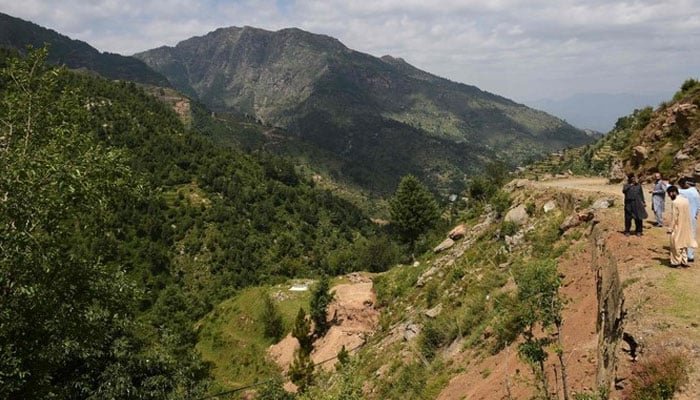PIDE has unveiled the dire state of Pakistan’s forests, indicating a staggering loss of nearly 20 percent of its forest area over the past 24 years.
In a concerning revelation, the Pakistan Institute of Development Economics (PIDE) has unveiled the dire state of Pakistan’s forests, indicating a staggering loss of nearly 20 percent of its forest area over the past 24 years. The latest research sheds light on the critical challenges and opportunities surrounding the Billion Tree Tsunami Project (TBTTP), underscoring Pakistan’s position with the lowest forestation rates globally.
According to the findings, Pakistan witnesses approximately 27,000 hectares of forest clearance annually, primarily attributed to factors like rapid urbanization, population growth, poverty, and energy scarcity, notably gas shortages. The impact of these phenomena is particularly pronounced in urban centers such as Lahore and Islamabad, where infrastructure development and extensive road constructions have exacted a toll on forestation efforts.
Pakistan’s forest ownership landscape presents another alarming trend, with private ownership dominating, especially when compared to neighboring South Asian countries. With 36 percent and 34 percent of forest land under private ownership in Pakistan and Bangladesh, respectively, concerns arise regarding sustainable forest management in the face of increasing privatization.
The distribution of Pakistan’s forest cover reveals significant disparities across provinces, with Khyber Pakhtunkhwa boasting the highest forest area, followed by Sindh, Punjab, ex-Fata, Balochistan, Azad Jammu and Kashmir, and Gilgit Baltistan. However, despite these regional variances, the overall forest cover remains strikingly deficient, with only 4.8 percent of the land area classified as forested in 2021.
Comparative analyses underscore Pakistan’s stark contrast with global and regional averages, where the nation falls significantly short of the desirable 25 percent forest cover recommended for environmental health. With less than one billion trees, Pakistan’s landscape stands in stark contrast to forest-rich nations like Russia, Canada, Brazil, and the United States.
The research further delineates the composition of Pakistan’s forest types, ranging from dry temperate forests to subalpine ecosystems. However, the overarching trend of deforestation threatens the ecological balance and exacerbates environmental challenges, including climate change mitigation efforts.
Alarmingly, the ownership dynamics within Pakistan’s forests reveal a concerning trend of marginalization, particularly among indigenous communities. As private ownership increases, indigenous peoples find themselves increasingly disenfranchised, raising significant concerns not only for forest conservation but also for the empowerment of these marginalized groups.
The implications of Pakistan’s dwindling forest resources extend beyond environmental concerns, encompassing social, economic, and developmental dimensions. Sustainable forest management practices, coupled with robust policy interventions, emerge as imperative to reverse the current trajectory and ensure a more resilient and equitable future for Pakistan’s forests and its people.
In light of these revelations, urgent action is warranted to address the multifaceted challenges posed by deforestation in Pakistan. Collaborative efforts between government agencies, civil society, and local communities are essential to mitigate the drivers of deforestation and foster a culture of environmental stewardship. Failure to act decisively risks irreversible damage to Pakistan’s natural heritage and undermines prospects for sustainable development.
